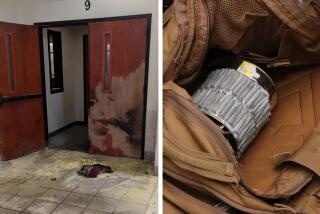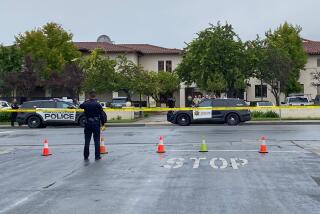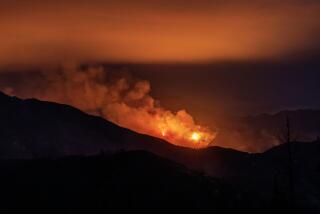Jury Hears Closing Arguments in Bombing Case
Jurors will begin deliberations today in the trial of a 37-year-old man charged in the Sept. 15, 1990, bombing of the federal courthouse in San Diego.
The six-man, six-woman panel heard closing arguments Tuesday from attorneys who agree that David Kevin Cox constructed a large pipe bomb similar to the one responsible for the mainly superficial damage to the courthouse.
Assistant U.S. Atty. Larry Burns portrayed Cox, an Escondido resident, as a man who is attempting to blame the bombing on two associates who had assisted him in the construction of other explosive devices.
The case, based largely on circumstantial evidence, points to Cox’s guilt, Burns said, because he told agents of the Bureau of Alcohol, Tobacco and Firearms that the courthouse bomb contained shell casings from .223-caliber bullets, and the chemical analysis showed that the powder in Cox’s pipe bomb matched the explosives in the courthouse device.
Burns said that Cox relayed this information even before FBI agents had received lab results on these “two crucial pieces of evidence.”
Burns also addressed part of Cox’s defense that maintains that he was suffering from methamphetamine psychosis, which led him to believe that Iraqi terrorists were operating in Escondido.
“Who bombs courthouses?” Burns asked. “Only either nuts or reactionaries. Back in August of 1990, this guy was kind of a nut.”
In contrast to the government’s assertions, defense attorney David Thompson said the government had elicited “twisted” evidence from several witnesses.
Thompson said that Cox contacted authorities because he was trying to assist in an investigation. The “alleged inside information” was not so secret, Thompson said, because 100 federal agents who participated in the investigation knew the type of container used for the bomb, as it was discovered soon after the explosion.
Thompson went on to point out the differences between the courthouse bomb, which was made out of a 30-pound Freon canister, and Cox’s pipe bomb, which was made out of a propane container and had a different fuse configuration.
Cox conceded that the powder in both bombs was similar but maintained that two friends had access to his “recipe.”
The bizarre case took another strange turn Tuesday morning when both attorneys asked U.S. District Court Judge Rudi M. Brewster to allow them to present additional evidence, even though both had rested their cases last week.
After Brewster granted the unusual motion, Burns recalled a surprise defense witness who said she had committed perjury while testifying in the case last week.
Deanna Fairman, who said she used to ingest methamphetamine with Cox, testified that she had helped Cox several times as he manufactured small bombs.
Furthermore, Fairman reported that Cox made an ominous statement several weeks before the courthouse blast. He told me “to watch the papers, that something was going to go down,” she testified.
Cox, an unemployed plumber, was indicted nearly a year after the attack on the courthouse.
More to Read
Sign up for Essential California
The most important California stories and recommendations in your inbox every morning.
You may occasionally receive promotional content from the Los Angeles Times.










